Desert Oasis: Wadi Rum in Jordan 🏜️
Exploring the Enchanting Beauty of Jordan's Timeless Sandstone Wilderness
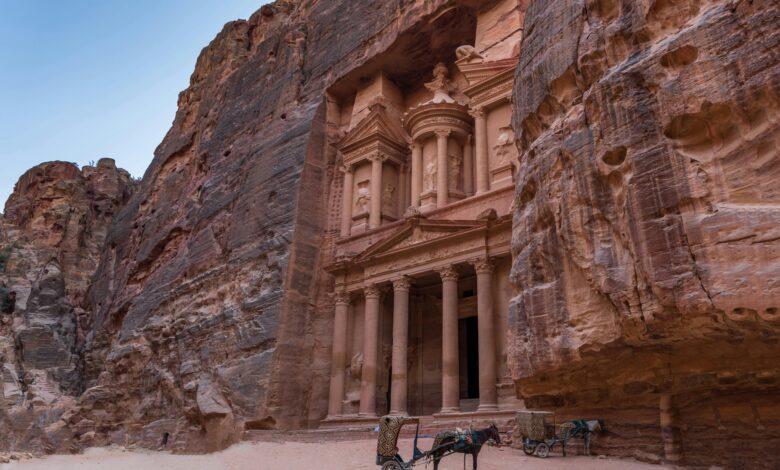
Introduction
Nestled in the heart of Jordan lies a desert oasis that transcends time, a place where ancient landscapes meet modern adventure. Wadi Rum, a UNESCO World Heritage Site, beckons travelers with its timeless beauty and geological wonders. In this blog post, we embark on a journey to explore the mystical allure of Wadi Rum, a desert that whispers stories of history, culture, and cinematic enchantment.
Exploration of the Unique Rock Formations and Landscapes in Wadi Rum
Nestled in the heart of Jordan, Wadi Rum presents a geological tapestry that captivates the senses. As you embark on an exploration of this otherworldly desert, you’ll encounter a mesmerizing array of rock formations and landscapes that seem to defy the norms of nature. Towering sandstone mountains rise majestically from the desert floor, their surfaces etched with intricate patterns formed over millions of years. The striking contrast between the reddish hues of the sandstone and the vast expanse of the arid desert creates a visual spectacle that leaves an indelible impression on every visitor.
Wadi Rum’s rock formations showcase the power of natural forces, with wind and water having sculpted the terrain into a collection of awe-inspiring shapes. From towering cliffs to gracefully arched bridges, each formation tells a story of the Earth’s relentless forces at work. Exploring the narrow canyons and hidden valleys reveals hidden alcoves and secret passages, inviting adventurers to immerse themselves in a geological wonderland.
Explanation of the Geological History that Shaped Wadi Rum
Delving into the geological history of Wadi Rum unveils a narrative written in stone. The region’s unique formations primarily stem from the sedimentation and lithification processes that transpired over millions of years. Layers of sand and mud accumulated, solidifying into the sandstone that characterizes the landscape today. Subsequent tectonic activity and erosional forces played pivotal roles in shaping the towering monoliths and labyrinthine canyons that define Wadi Rum.
Jebel Um Ishrin, one of the prominent peaks in Wadi Rum, stands as a geological testament to the region’s tumultuous past. Composed of resistant rock layers, this mountain has withstood the test of time, while surrounding softer layers eroded away, creating a distinct silhouette against the desert sky.
Highlighting Iconic Landmarks: Jebel Um Ishrin and Burdah Rock Bridge
Among the many geological wonders of Wadi Rum, Jebel Um Ishrin and Burdah Rock Bridge stand out as iconic landmarks, drawing adventurers and nature enthusiasts from around the globe. Jebel Um Ishrin, often referred to as the “Mother of All Mountains,” commands attention with its sheer vertical cliffs and rugged slopes. This towering monolith not only showcases the region’s geological diversity but also offers breathtaking panoramic views of the surrounding desert.
Burdah Rock Bridge, a natural sandstone arch soaring high above the desert floor, epitomizes the sculpting forces of erosion. Formed over eons by wind and weathering, this geological marvel invites visitors to witness the delicate balance between fragility and endurance. Standing beneath the arch, one can marvel at the intricate patterns etched into the rock, a testament to the relentless forces that continue to shape Wadi Rum’s geological tapestry.
Cultural and Historical Significance of Wadi Rum
Wadi Rum, also known as the Valley of the Moon, stands as a testament to the rich cultural and historical tapestry of the Middle East. This iconic desert valley in southern Jordan has been inhabited by the Bedouin people for centuries, shaping the region’s narrative and playing a pivotal role in its historical evolution.
Wadi Rum served as a crucial crossroads for ancient trade routes, connecting the Arabian Peninsula with the Levant. This strategic location made it a hub for various civilizations, leaving behind traces of their presence in the form of petroglyphs and inscriptions scattered across the rocky landscapes. The valley’s significance extends beyond its geographical location, serving as a living museum of human history.
Ancient Petroglyphs and Inscriptions
Among the towering sandstone cliffs of Wadi Rum, ancient petroglyphs and inscriptions tell stories of bygone eras. These rock carvings, some dating back thousands of years, depict scenes of daily life, mythical creatures, and ancient scripts. Each engraving serves as a historical artifact, providing a glimpse into the beliefs, rituals, and artistic expressions of the diverse cultures that once traversed this mystical desert.
These petroglyphs are not merely static drawings on rocks; they are living remnants of the past, connecting the present generation with the rich heritage of their ancestors. The preservation of these carvings highlights the importance of Wadi Rum as an archaeological treasure trove, attracting researchers and enthusiasts alike.
Traditional Bedouin Lifestyle and Hospitality
Embedded within the timeless landscapes of Wadi Rum is the heart of Bedouin culture. The nomadic Bedouin people have called this desert home for generations, forging a unique lifestyle deeply intertwined with the rhythms of the natural environment. The vast expanse of Wadi Rum serves as an open-air dwelling for the Bedouins, where they showcase their resilience and resourcefulness.
Hospitality is a cornerstone of Bedouin culture, and visitors to Wadi Rum are welcomed with open arms. Traditional Bedouin tents, adorned with vibrant rugs and cushions, offer a glimpse into their nomadic lifestyle. Sharing a cup of sweet Bedouin tea and listening to ancient stories under the star-studded desert sky, visitors become part of a tradition that has endured for centuries. Wadi Rum is not just a geographical marvel; it is a living testament to the warmth and generosity of the Bedouin people, making every visit a cultural immersion into the heart of the desert.
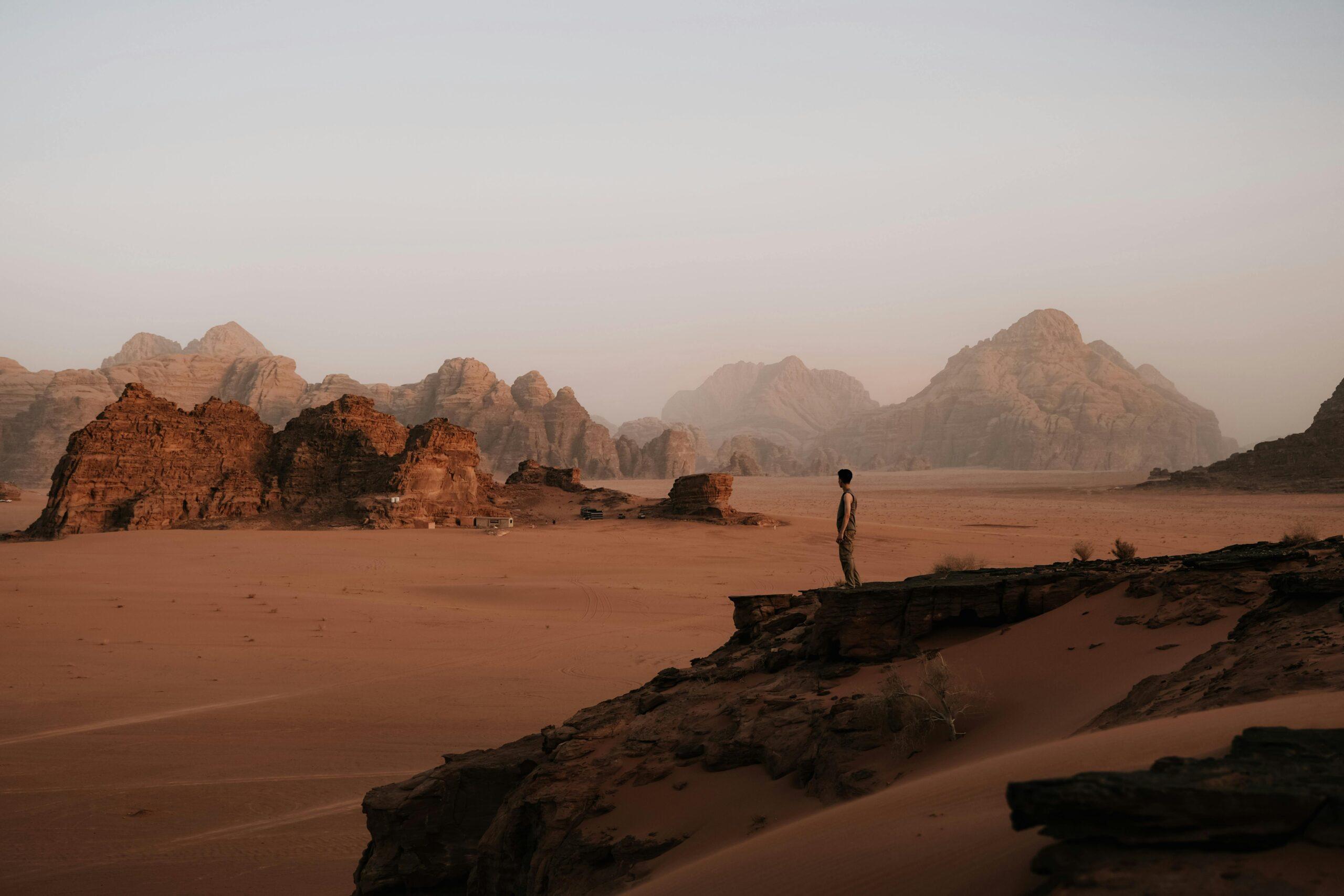
Jeep Safaris in Wadi Rum
Embarking on a Jeep safari in Wadi Rum is an exhilarating adventure that promises a unique blend of thrill and awe-inspiring desert landscapes. Visitors can hop on a 4×4 vehicle and explore the vast, otherworldly terrain of Wadi Rum, known as the Valley of the Moon. Trained guides navigate through the towering sandstone mountains and expansive sand dunes, offering a heart-pounding ride that reveals the desert’s hidden treasures. With every twist and turn, you’ll discover ancient petroglyphs, stunning canyons, and dramatic rock formations, creating memories that last a lifetime. Jeep safaris in Wadi Rum provide an unmatched experience, immersing travelers in the untamed beauty of the desert.
Camel Treks
For a more traditional desert experience, camel treks offer a slower-paced journey, allowing visitors to connect with the serene beauty of Wadi Rum. Riding atop a camel, known as the “ship of the desert,” provides a unique perspective as you traverse the sandy expanse. Skilled guides lead camel caravans through winding trails, offering insights into the desert’s history and nomadic culture. The rhythmic swaying of the camel enhances the immersive experience, allowing you to appreciate the vastness of Wadi Rum at a leisurely pace. Camel treks provide a sense of tranquility, making them an ideal choice for those seeking a more contemplative adventure in the desert.
Camping Under the Desert Stars
Wadi Rum’s allure extends beyond daylight hours, inviting visitors to experience the magic of camping under the expansive desert sky. As the sun sets, the desert transforms into a celestial canvas, with countless stars illuminating the night. Many campsites offer traditional Bedouin-style accommodations, allowing guests to embrace the local culture while enjoying modern comforts. The silence of the desert night, interrupted only by the crackling of a campfire, creates a peaceful ambiance. Camping in Wadi Rum offers a unique opportunity to disconnect from the hustle of everyday life and connect with the vastness of the cosmos in a truly extraordinary setting.
Rock Climbing and Hiking Adventures
Thrill-seekers and nature enthusiasts alike will find Wadi Rum to be a haven for rock climbing and hiking. The desert’s rugged mountains and sandstone cliffs present an exciting challenge for climbers, with routes catering to various skill levels. Hiking trails weave through narrow canyons and wind up to panoramic viewpoints, revealing the surreal beauty of the desert from elevated perspectives. Whether scaling the heights or trekking through ancient pathways, Wadi Rum provides an immersive adventure for those seeking an active and exploratory desert experience.
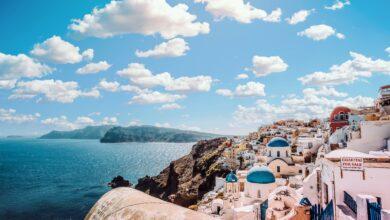
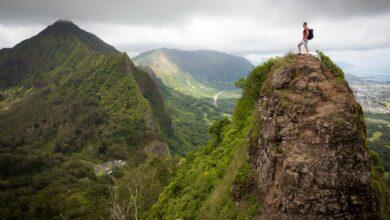
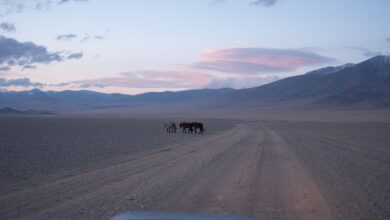


Facebook Comments